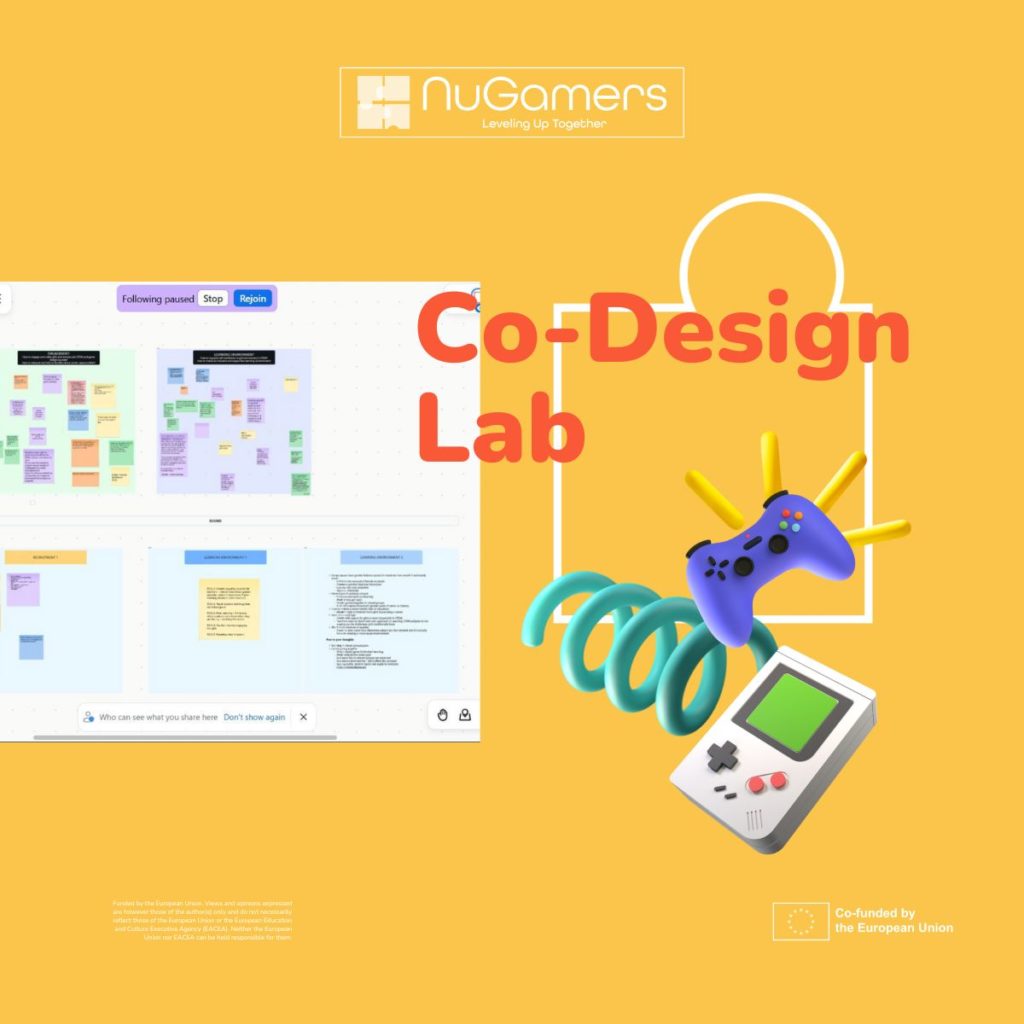In preparation for the next output of the NuGamers project – the NuGamers Toolkit – we led a co-design lab to gather input from 20 educators from the countries involved in the project’s partnership: Finland, Belgium, Italy, Croatia, and Sweden.

Icebreaking – The Games We Love
The lab began with an icebreaker rooted in personal gaming experiences: participants introduced themselves through their favorite games. Responses ranged from video game classics like Final Fantasy, Minecraft, Assassin’s Creed, and Mario Kart, to analog gems like Hive, Chess, Dixit, and even traditional games like Morra and Domino. This playful start immediately highlighted the universality of play, a key entry point for connecting with students, regardless of gender.
First Challenge: Engagement – How to Attract and Retain Girls in STEM and Gaming
The first design challenge focused on engagement strategies: How can educators and institutions better attract girls to STEM fields and reassure families about career prospects in game development?
Participants shared their thoughts and worked in groups to develop the following solutions:
- Visibility and Role Models: Participants emphasized the importance of female role models, both in schools and the industry. From inviting alumnae to speak at career days, to showcasing the paths of successful women in STEM, these strategies help demystify the field and make it relatable and achievable.
- Communication and Awareness: Open discussions with families about job opportunities, salaries, and growth potential in the gaming industry were cited as essential. Transparency and concrete examples can shift perceptions and address common fears.
- Inclusive Campaigns and Policies: Schools that ran marketing campaigns featuring female voices, or collaborated with national initiatives such as school-to-work programs (e.g., Italy’s PCTO), saw a stronger interest from girls.
- Safe and Supportive Spaces: Several educators highlighted the need to begin early, even in primary schools, to create safe environments where girls feel free to express themselves and explore STEM subjects.
Second Challenge: Learning Environment – Building Confidence and Inclusion
The second challenge tackled the learning context itself: How do we ensure girls not only enroll in STEM programs, but also thrive in them?
Again, educators developed ideas to face this challenge, starting from their personal experiences, enriched by group work with the other participants:
- Gender-Inclusive Teaching Practices: Teachers must be trained to recognize unconscious biases, use inclusive language, and ensure equal participation. Encouraging quieter students (often girls) to speak up, and rotating roles in team projects, can make classrooms more equitable.
- Peer Support and Tutoring: Initiatives like peer education, tutoring by older students, and co-designing games in mixed-gender groups were seen as particularly effective.
- Curricular and Structural Changes: Embedding gender equality topics across curricula – not just as standalone lessons – was suggested as a way to normalize inclusion. Some educators also cited gender-balanced quotas in classrooms as a technique that fosters mutual respect and reduces bias.
- Emotional Intelligence and Soft Skills: Training for both students and teachers in emotional intelligence was repeatedly highlighted. Understanding oneself and others creates a more empathic environment, which is key to sustained engagement.
- Creative Empowerment: Encouraging girls to design their own games, explore non-traditional narratives, and use game-based learning in classrooms can create a stronger emotional and intellectual connection to the field.
Toward the NuGamers Toolkit
These insights from the co-design lab will directly inform the development of the NuGamers toolkit, designed to provide teachers, trainers, and recruiters with practical, actionable activities, tools and tips, from classroom activities and case studies to workshop templates and recruitment strategies.
